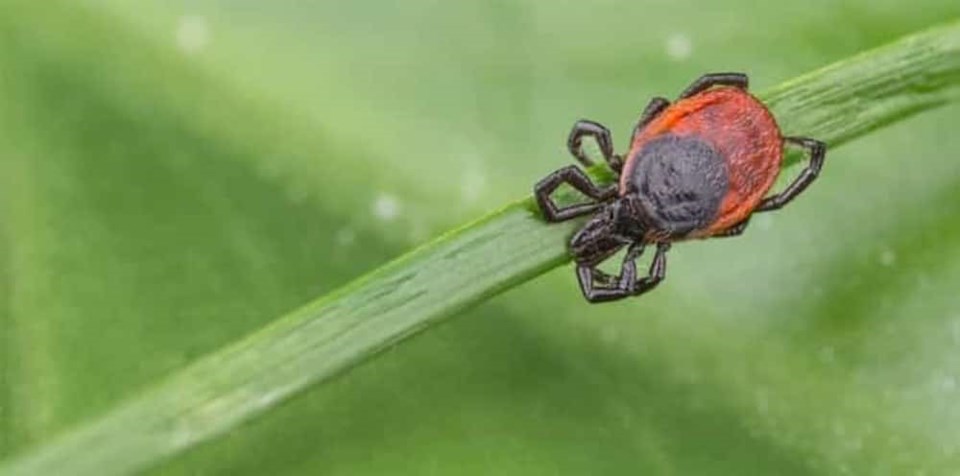Justin Bieber shared a post on Instagram today stating that he was diagnosed with Lyme disease as well as a serious case of mono (infectious mononucleosis).
The Canadian pop star shared an article by the American tabloid news website, TMZ, which outlined a number of rumours that have circulated around him over the past couple of years.
"While a lot of people kept saying Justin Bieber looks like shit, on meth etc. they failed to realize I've been recently diagnosed with Lyme disease," he wrote.
"Not only that but had a serious case of chronic mono which affected my skin, brain function, energy, and overall health."
Bieber goes on to say that his condition will be explained further in a documentary series that he will be releasing on YouTube. He notes that fans will be able to see what he's been battling and overcoming over the past couple of years as well as what will be happening in the future.
Highlighting a rough couple of years, Bieber explains that he's getting the right treatment now that will, "help treat this so far incurable disease and I will be back and better than ever."
A number of popular stars commented on the post including 2chainz, Chance the Rapper, Avril Lavigne, Ludacris, Patrick Schwarzenegger, Timbaland, and many more.
Fellow Canadian pop singer Avril Lavigne was also diagnosed with Lyme disease in 2014, and she shared her support for Bieber in a separate post on her Instagram account.
Lavigne mentions how the disease is "life-altering" and that, "There are too many people that have this debilitating disease! People I love and care about and many friends and fans I have crossed paths with. To everyone affected by Lyme, I want to tell you that there is HOPE."
She adds that Lyme disease is found in every country in the world, except Antarctica, and that it is, "a global pandemic but NOT a global priority.
What exactly is Lyme disease and how does one get it?
Lyme disease - also known as Lyme borreliosis - is an infectious disease spread by ticks carrying the bacteria called Borrelia burgdorferi.
Ticks may carry four or five different bacterial diseases such as Lyme disease and ehrlichiosis. As a result, it is crucial that the tiny pests are removed from the skin as soon as they are discovered. The Centres for Disease Control and Prevention (CDC) states that you shouldn't, "twist or jerk the tick; this can cause the mouth-parts to break off and remain in the skin."
If you notice a tick has attached itself, remove it as soon as possible. Removing ticks within 24 to 36 hours usually prevents infection. Follow these steps to .
Blacklegged ticks are most often found in wooded or forested areas, in leaf litter or on shrubs and tall grass in some parts of Canada. Since ticks are small, you might not realize that you've even been bitten. However, in most case, an infected tick must attach and feed for at least 24 hours before the bacteria can be transmitted.
 Photo: Deer tick / Shutterstock
Photo: Deer tick / Shutterstock Pets can carry unattached and potentially infected ticks into your home and your yard which could increase your chance of being bitten by a tick. You cannot be infected directly by your pet.
There is no evidence that Lyme disease can spread from person-to-person. A person cannot get infected from touching, kissing, having sex or other forms of casual human contact.
If you work outdoors or participate in outdoor activities, you may be at a greater risk for tick bites.
In British Columbia, currently identified risk areas for Lyme disease are:
- Â鶹´«Ã½Ó³»Island
- Southern Mainland
- Coast of British Columbia facing Â鶹´«Ã½Ó³»Island
- River valleys across the southern part of the province
Here are some ways to protect yourself if you venture into wooded or forested areas within risk areas for Lyme disease:
- Wear light coloured long-sleeved shirts and pants to spot ticks more easily
- Tuck your shirt into your pants, and pull your socks over your pant legs
- Use bug spray containing DEET or Icaridin on your skin and clothing (always follow the directions on the label)
- Walk on cleared paths or walkways
- Shower or bathe within two hours of being outdoors to facilitate a prompt tick check and to remove ticks that have not attached yet
- Do a on yourself and your children, especially in the hair, under the arms, in and around the ears, inside the belly button, behind the knees, between the legs and around the waist
- If you find an attached tick, remove it with tweezers immediately. Removing it within 24-36 hours can help prevent infection.
- Do a tick check on your outdoor gear and your pets as they could carry ticks inside your home
- Put dry outdoor clothes in a dryer on high heat for 10 minutes to kill any remaining ticks. If your clothes are damp, additional drying time is needed. If you need to wash your clothes first, hot water is recommended. If the clothes cannot be washed in hot water, tumble dry on low heat for 90 minutes or high heat for 60 minutes.
Most cases of Lyme disease can be effectively treated with 2 to 4 weeks of antibiotics if caught early.
Early signs and symptoms of Lyme disease usually start 3 to 30 days after you have been bitten by an infected blacklegged tick. Most people experience mild flu-like symptoms soon after being bitten, while a small number may have more serious symptoms, sometimes weeks after the bite.
Early signs and symptoms of Lyme disease may include:
- Rash, sometimes shaped like a bull's eye (Erythema migrans (EM rash))
- Fever
- Chills
- Headache
- Fatigue
- Muscle and joint aches
- Swollen lymph nodes
If left untreated, more severe symptoms may occur and can last from months to years. Severe symptoms may include:
- Severe headaches
- Additional EM skin rashes
- Facial paralysis (i.e. Bell's palsy)
- Intermittent muscle, joint, tendon and bone aches
- Heart disorders (heart palpitations, abnormal heartbeat), known as Lyme carditis
- Neurological disorders (dizziness, mental confusion or inability to think clearly, and memory loss, inflammation of the brain and spinal cord, nerve pain, numbness or tingling in the hands or feet)
- Arthritis with severe joint pain and swelling, particularly the knees and less commonly in other joints such as the ankle, elbow and wrists.
In rare cases, Lyme disease can lead to death usually because of complications involving infection of the heart.



